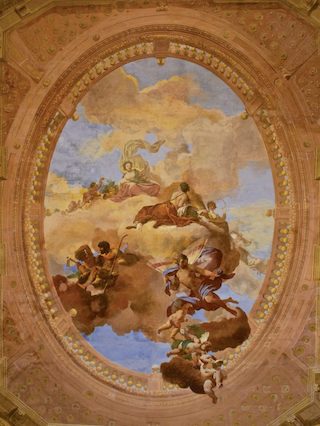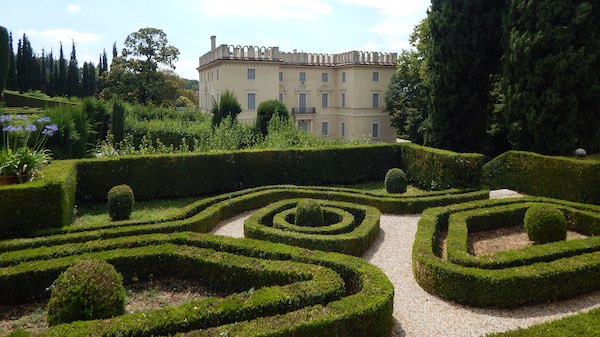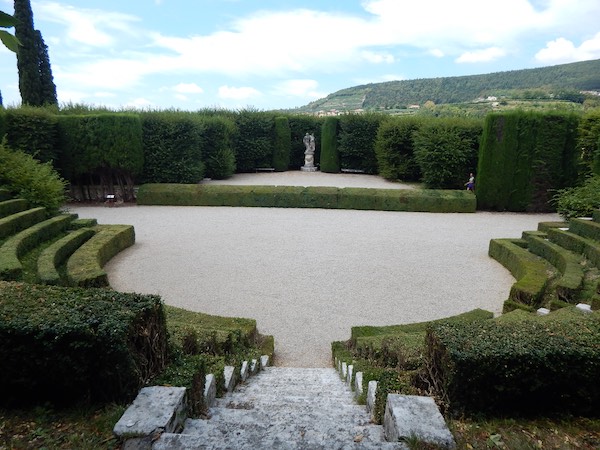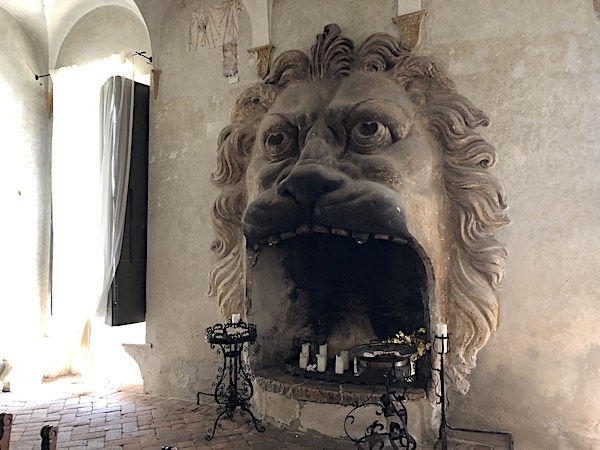Villa Wineries in Valpolicella
The Italian equivalent of the French concept of "Chateau"
is Villa: a beautiful manor house in the center
of a large estate.
Valpolicella has many excellent wineries inside gorgeous villas,
often surrounded not only by vineyards, but also by romantic and
Italian style gardens. They can become
destinations for a thematic wine tour in the land
of Amarone, one of the stopovers in an itinerary that
includes other cellar styles, or the setting for a
private event.
For further information on visits and wine tastings in the villas of Valpolicella:
The Villa
The Romans
The idea of villa was born in Roman age. Patrician families built impressive residence with mosaics covered floors, frescoed wall, statues and fountains, in the middle of large rural properties. The villa served as a way for the owners to control the ongoing agricultural activities of the estate as well as a place to spend comfortable and relaxing holidays away from the noise and smell of big cities.
Venice and the mainland
The villa reached its maximum development in Veneto region during
the Venetian era, from 1500s.
Noble families started to invest in the mainland the wealth
accumulated with trade, buying land and building Renaissance
country residences. Famous architects like
Palladio created masterpieces of neoclassical
style flanked by barn buildings where peasants and
servants worked producing wheat, rice, corn, olive oil and of
course wine.
Villas became status symbols, often hosting a
very lively cultural scene, with parties,
performances in private theaters, and the presence of poets,
artists and important characters of the age.
Villas in Valpolicella
In Valpolicella too, as part of Verona province and the state of Venice, many beautiful villas were built in a time span of almost four centuries, and today some of them host cellars with gorgeous hospitality areas of famous wineries. Most of them can be visited.
Villa Mosconi Bertani
 The
villa as we see it today, with the neoclassic style
façade, was built in the XVIII Century in the
middle of a fertile valley with its many water springs used since
Roman times. It became a cultural center where
poets and artists spent time as guests of the noble Mosconi
family. Like many villas it was also an agricultural center where
cereals, olives and of course grapes were produced, processed and
stored in the wings on each side of the main structure. A private
chapel was also built. Villas in fact where small
communities where peasants and workers lived most of their lives
and therefore needed a place to pray. The word "village" comes
indeed from the word "villa" as the group of houses for the
peasants built around the main manor.
The
villa as we see it today, with the neoclassic style
façade, was built in the XVIII Century in the
middle of a fertile valley with its many water springs used since
Roman times. It became a cultural center where
poets and artists spent time as guests of the noble Mosconi
family. Like many villas it was also an agricultural center where
cereals, olives and of course grapes were produced, processed and
stored in the wings on each side of the main structure. A private
chapel was also built. Villas in fact where small
communities where peasants and workers lived most of their lives
and therefore needed a place to pray. The word "village" comes
indeed from the word "villa" as the group of houses for the
peasants built around the main manor.
Unlike many other estates in Valpolicella, where wine was just one
of many products and was stored in non specialized cellar, the
basement of Villa Mosconi Bertani was built from the very
beginning to be a functioning and well equipped cellar
to store big amounts of wine using very modern solutions for that
time. Until 1950s it was the headquarter of the local
cooperative winery and the legend has
it that it was here that a forgotten barrel of Recioto transformed
into Amarone. Later it was bought by the Bertani winery
that used it to make its legendary Amarone Villa Novare.
Today is still owned by the Bertani family that continues
producing wines here with the new label Tenuta Santa
Maria alla Pieve. The building is surrounded by over
556 acres of land, half of which are vineyards.
The visit includes a tour in the beautifully frescoed
central hall of the villa, the romantic style
garden with the artificial pond and
fairy-tail-like coffee house, the walled
vineyard (brolo), the old
cellar, and is followed by a tasting
of a selection of Tenuta Santa Maria alla Pieve wines.
Villa Rizzardi and Pojega Garden

It was built in the middle of the wide properties that the noble
Rizzardi family owned in Negrar,
one of the main valleys inside Valpolicella Classica region. The
villa is still owned by the Rizzardi family that at the beginning
of 1900 merged with the Guerrieri family from Bardolino
starting the Guerrieri Rizzardi Wineries. Few
acres of vineyards still surround the villa and are used for the
production of Guerrieri Rizzardi Amarones.
The villa was originally built in the XVII century but what we see
today is the result of the mid 1800 restoration that transformed
it in an example of eclectic style.
The villa is generally not open to the public, but the Pojega
garden that surrounds it is accessible from April to
October. It is one of the most extraordinary examples of Italian
and romantic style gardens in the world. It was
designed in XVIII century to combine the Italian
Renaissance garden, with geometrically shaped
hedges of boxwood, bay tree and hornbeam with the new
style of romantic garden that was developing
especially in England. Evocative boulevards made of long lines of
tall cypress trees connects different parts of the garden that is
scattered with statues of wild animals and
Venetian lions, ancient Greek gods, fake
grottos, ponds and waterfalls.

The most amazing element of the garden is a theater
made of trimmed boxwood, one of the only three still
remaining in the world. In Summer, concerts and plays are held in
the "green theater".
The old barn and farmyard behind the villa has been completely
restored and now hosts a cozy wine shop where, at the end or
before the walk in the Pojega garden, is possible to sample the
full portfolio of Guerrieri Rizzardi, including wines from their
estates in Soave and
Bardolino.
Villa della Torre

Villa della Torre in Fumane valley, in the
heart of Valpolicella, is one of the most representative example
of the true essence of Renaissance. It was
designed in the 16th Century by Giulio Romano as
a replica of a typical Roman age house: the domus.
Like a domus it had a central courtyard (atrium),
with a fountain (impluvium) surrounded by a square
colonnade (peristyle) that give access to the rooms.
The villa was conceived also as a symbolic representation
of hidden meanings that clearly express the complexity
of Renaissance involving philosophy, ancient Greek mythology,
astronomy, etc. These includes the gigantic fireplaces
shaped like a lion head, a devil and a sea monster, the mysterious
circular grotto under the building, the pond
and the upper octagonal church.
Few years ago Villa della Torre was bought by Allegrini
winery, that already owned the vineyards around and
used those grapes for the production of one of their best selling
wines: Palazzo della Torre.
The structures underwent a careful restoration and now the villa
is used for weddings, events, tastings at the wine shop in one of
the barn buildings. There are also few rooms so that is actually
also possible to stay at the villa.
These are only few examples of the beautiful villa-wineries that you can find in Valpolicella, that include Villa Serego (Santa Sofia cellar), designed by Andrea Palladio, Villa Giona (Salvaterra estates), Villa Fumanelli (Squarano winery), Serego Alighieri.
For any further information on tours and visits of the villas and the wineries of Valpolicella or to book a wine tour in any producing areas around Verona please also check www.amaronetours.it or send us an email:
